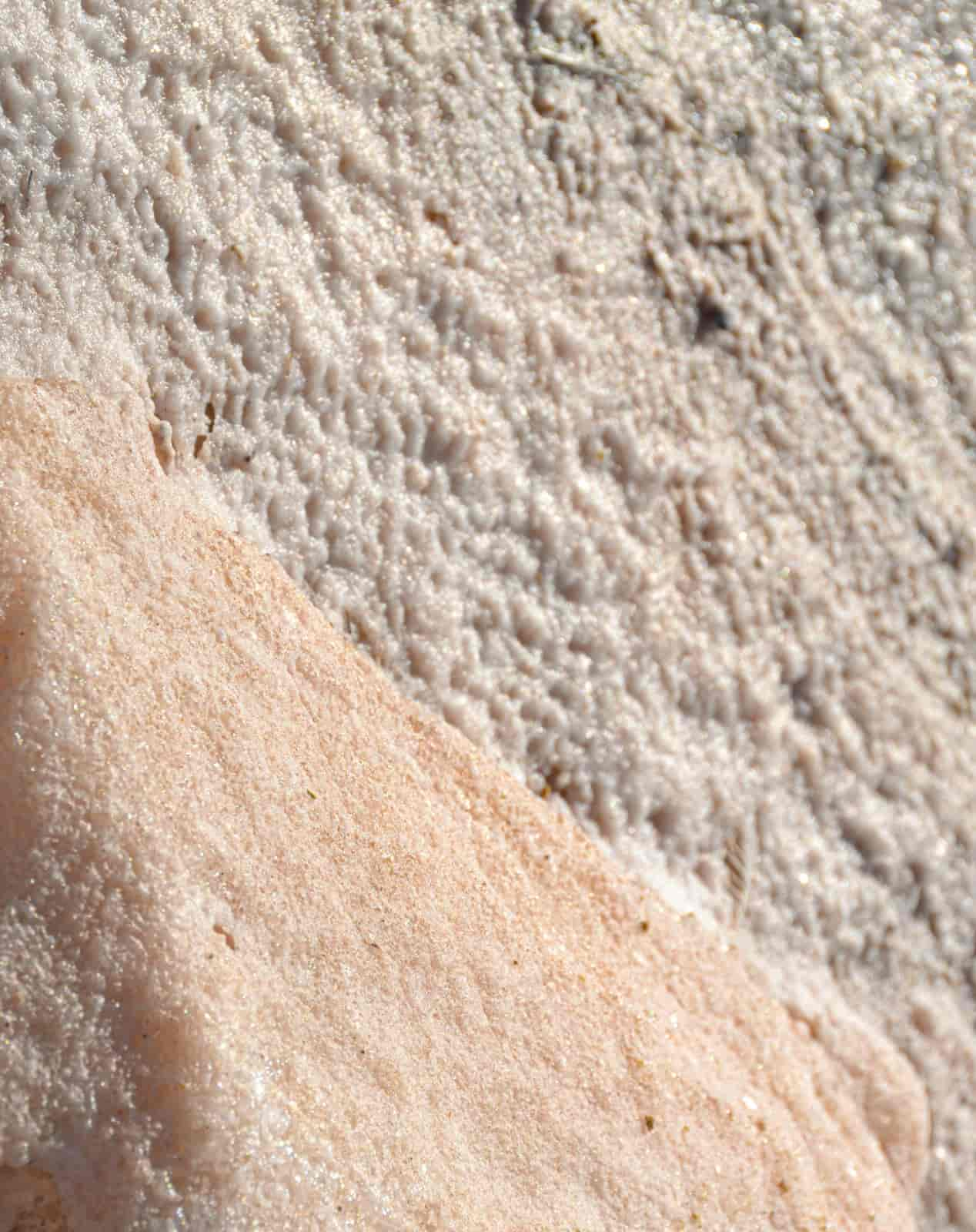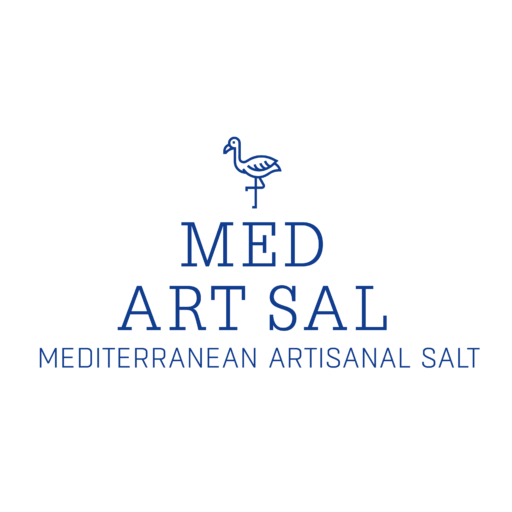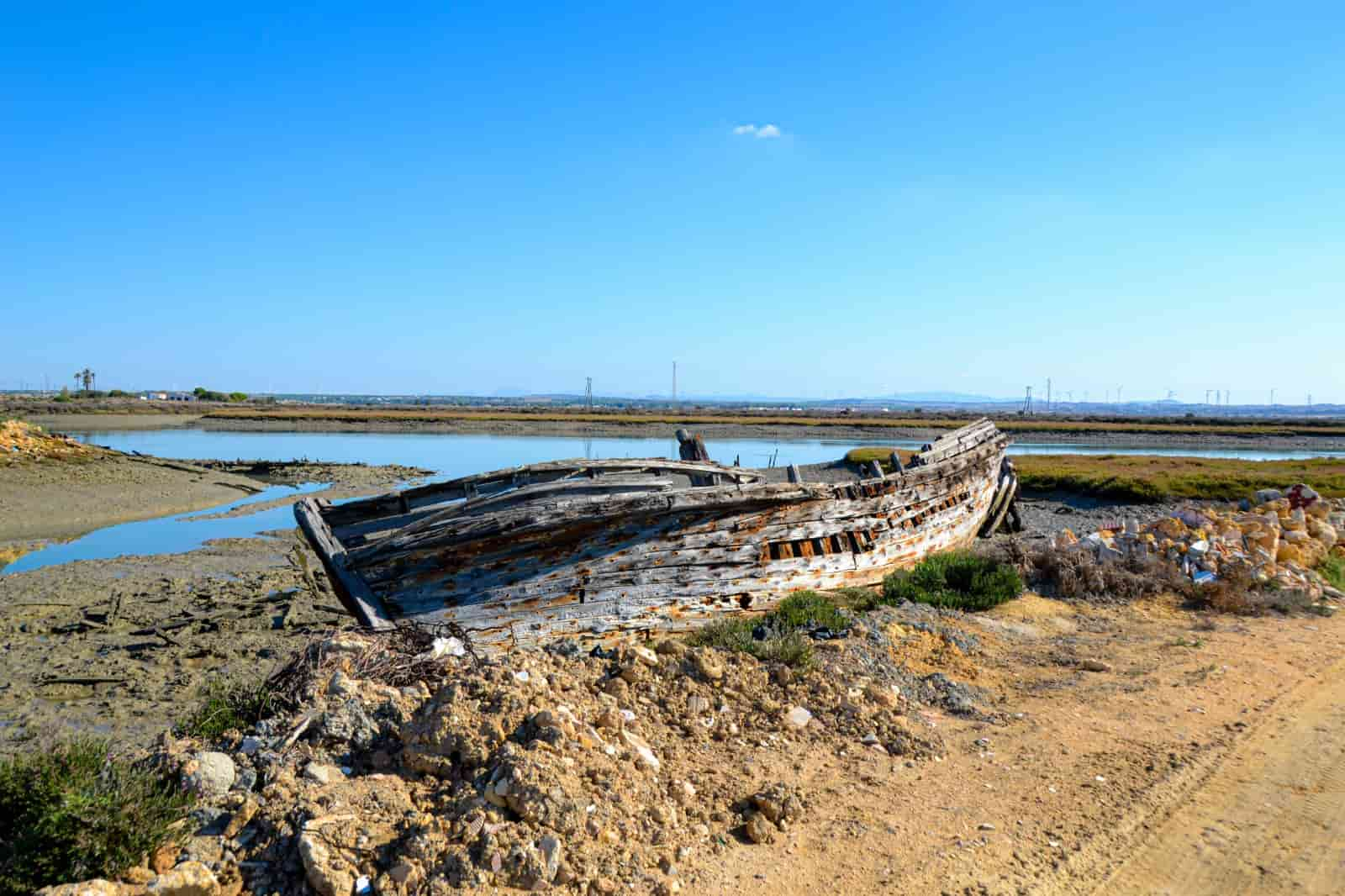HISTORY
Reaching great economic, political and culinary repercussions throughout the different civilizations that have been polishing our culture and ways of life, salt is a mineral substance of great importance for human and animal health, as well as for industry. But, in addition to the merely chemical properties of common salt, it has accompanied humanity since its inception, and its use has been key in the establishment of humanity as an agricultural and livestock society, due to its ability to preserve food.
Salting meat and fish is one of the oldest preservation methods that exist. Its use, among other techniques, allowed human societies to have long-term food storage and establish sedentary settlements, ceasing to be nomadic and setting up the first steps of human civilizations. For centuries and in different cultures, salt has been perceived as a mineral with strong association with the ritual, even the superstitious, structuring some human beliefs that survive to this day.
Despite its historical importance, salt continues to be, along with all the heritage associated with it, one of the great forgotten, largely due to the scarcity of historical sources of information regarding its exploitation and trade, and the lack of specific researches. The scarce data provided by the classical authors do not give enough information about the production systems, organization of property or the forms and routes of commercialization of this mineral in cultures such as the Egyptian, Phoenician, Greek, Carthaginian and Roman. With exceptions, salt, its production and commercialization has not been taken into consideration until now by historians and other professionals.
Today, it is a product whose use is generalized in all global gastronomy and industry, either as a condiment, as an essential preservative for food or in its non-food uses. The meat packing, sausage making, fish curing and food processing industries use salt as a preservative or seasoning or both. It is used to cure and preserve hides and as a brine for refrigeration.
In the chemical industry, salt is necessary for the manufacture of sodium bicarbonate, sodium hydroxide, hydrochloric acid, chlorine, and many other chemicals. Salt is also used to produce soap, enamel and porcelain enamel and enters metallurgical processes as a flux.
FIRST REFERENCES
There are no clear scientific details about when salt was first used, either as a condiment or as a preservative. It is true that some animals instinctively lick certain stones with a salty taste and that this action gives them pleasure, so it is quite likely that primitive man had this need to lick rocks in order to obtain the salty taste, or perhaps he found that foods surrounded by salt were preserved for a longer time. The truth is that the uses of salt by humans date back to very distant times that all cultures on earth have considered salt as a valuable object worthy of commercial transactions. Thus, whoever controlled the salt, whether it was the few mines and salty streams inland or the more abundant salt flats by the sea, had a great weapon.
The first observations of sea salt were probably made in the coastal lagoons, where sea water penetrated spontaneously at high tides, and by action of solar evaporation in dry season the waters were concentrated to dryness, precipitating all the salts contained in them. This form of accidental production was followed by deliberate floods with seawater, forming lagoons or ponds that were exposed to solar evaporation, thus initiating the first procedures for the exploitation of sea salt. Subsequently, operational experience showed that the product obtained was of better quality if the movements of the concentrated waters or brines in the different ponds built on purpose were controlled, in order to separate most of the salt in the final ponds, also avoiding the total evaporation of the brine. This type of natural facilities gave rise to the traditional salinas.
There are deposits in Central Europe which confirm at least the use of salt already in the Iron Age, such as the Hallstatt culture. Probably the first uses of salt came from cooking with water of sea and salt as an undissolved substance, from its extraction in the form of a mineral called halite.
Our body cannot live without salt. When human beings stopped being hunter-gatherers (going from consuming bushmeat and wild vegetables to cereals and meat from housed animals), they had to look for new sources of sodium chloride supply, that is the reason that salt mines are exploited since the Neolithic.
In this period, certain trade routes were established in Europe which connected various distant populations due to transhumance. These roads were in charge of offering a means for the transport or merchandise in order to trade between different towns. Some of these routes would later become specialized salt transport roads such as the Alte Salzstrasse (100 km long) in Germany, which connected the Lüneburg salt mines with Lübeck. They soon gained prominence, becoming salt routes in Roman times through which salt was transported from production centers to places where it was needed. Example of this type of route are found in Liguria and in France, in Salies-de-Béarn.
BEGINNINGS IN ASIA

In Asia, there is evidence of salt production in the remainders of pottery used in its production and its transport. The Chinese fermented food in salt since ancient times and its culinary uses spread throughout Asia, making some of the sauces one of the characteristics of Asian cuisine.
The oldest written references on the production of salt and the control of its commercialization are in China. It is an unfinished work of pharmacology entitled Pen tzan kang-mu, compiled by order of Emperor Shemmeng around 2697 BC in which reference is made to the qualities of multiple types of salts. One of the first salt flats verified for use in human consumption is located in the north of Shanxi province, in a place full of mountains and salty lakes. It is likely that the summer sun evaporated the water from the lakes and the population collected the salt crystals that emerged on the surface of the lake. The first salt extractions through elaborate processes (using hydraulic machinery) date back to the time of the Xia Dynasty around 800 BC. During that time, sea waters were introduced into clay containers exposed to the fire of wood bonfires until the salt crystals were obtained by the evaporation of the brines. At this time, the first use of salt in the food area appeared in China: soy sauce, made with fermented soybeans made with salt. They also began to prepare fermented fish sauces; which 1000 years later would be used in the form of garum in the Mediterranean.
Texts from the 3rd century BC mention the salt tax, levied on each of the purchases made by the people of that time. These practices generated a salt monopoly that lasted almost 300 years. With the salt revenues, it was possible to finance a large part of the construction of the Great Wall of China.
PRODUCTION IN EUROPE, NORTH AFRICA AND MIDDLE EAST
In the West, preserved mummies have been found in the saline sands of the deserts of Egypt dating back to 3000 BC, which shows a certain knowledge about the preservative properties of salt in the time of the pharaohs. The uses that were made in Ancient Egypt included both culinary and funeral rites. It was there where it is known that the meat began to be cured in salt, making the first salting. It is believed that it was one of the first cultures to salt ham and fish from the Nile, creating the origins of the dish called bottarga, very typical in the Mediterranean cuisine. One of the first culinary uses could have also been the maceration in brine of the fruit of the olive tree: olives.
The Egyptian salt came from the solar salt flats located in the vicinity of the Nile delta, but also from trade between the ports of the first Mediterranean cultures, especially Libya and Ethiopia. The Egyptians were already experts in the export of raw food, but thanks to salt and its preservation properties they managed to expand the number of marketable foods, becoming the first exporters of salted fish in ancient times.
Today, some salt transport routes are still in operation and it is possible to see salt transport caravans along them, such as the Azalai (which means salt caravans). On this established road through the Sahara, the Tuaregs transport a large quantity of salt on camels to various cities in the Mediterranean and North Africa.
In Europe, the mines of Hallein (which means salina) in the vicinity of the Austrian city of Salzburg (city of salt), exploited by the Celts, are one of the first continental contributions to the salt trade. When the Celts were giving in to the advances of the Roman Empire, their knowledge regarding the extraction and use of salt was transferred to the Romans. During the first moments of the Empire, the patricians insisted that each man had the right to a portion of “common salt”, giving fundamental importance to this product. In fact, its relevance was such that most Roman cities were builds next to some salt flats.
Infrastructures for transport and trade were soon build throughout Europe and the Mediterranean. Some of the most important roads that connected trade centers and specific routes were named with a name that arises from salt: Via Salaria. Even the term salary, derived from the Latin salarium, comes from the amount of salt that was given to Roman legionaries as a form of payment for their service in the army. Romans traded with salt through the Mediterranean thanks to the use that they also gave to sea port, such as those located in Ostia, Ephesus in the port of Panormo, Phalasarna and Aquileia.
It was a habit to add salt in dishes that had a high content of vegetables to appease the acid taste of some varieties, thus originating the word “salad”. Consumption of salt was so high that Pliny calculated that an average Roman ingested the amount of 25 grams a day, mentioning that in Roman markets food was sometimes sold already salted.
Among the culinary refinements was the garum, which consisted of a fish sauce subjected to lactic fermentation due to the use of abundant salt. At this time the factories of this and other similar sauces spread throughout the Mediterranean coast. As a general rule, the salinas were located during the time of the Roman Empire near the centers of fish catching. Nevertheless, Romans found sources of salt in the interior, specifically in the mines Germania Superior, many of which were later closed or destroyed during the fall of the Roman Empire.

STATE IN THE MIDDLE AGE
The fall of the Roman Empire left numerous salt flats on the Mediterranean coasts capable of providing abundant salt, which was also of great quality. However, in the 3rd century, hand in hand with the decline of the fishing sector and the industrial activity of salting, we witness the first salt crisis that affected the western Mediterranean. The transfer of the axis of commercialization of salted fish to the eastern part of the Mediterranean and the Black Sea led to the closure of a large number of factories and, consequently, a drop in the demand for salt and the abandonment of a large number of western Mediterranean salinas. This situation, which remained low in response to the supply of the local population, continued until at least the 6th century, at which point the salt market began to re-emerge in areas such as Venice, Sardinia and the south of France. Some cities became famous for the artisan production of food products in which salt is necessary, such as ham (the prosciutto di Parma in the city of Parma, jamón serrano in Spain or the jambon de Bayonne in Bayonne), cheese (the difference between fresh cheese and cured cheese is the amount of salt), cold cuts such as salami (the Latin word for salami comes from salt) and sauerkraut from Alsace. During the Middle Age, the salt trade was consolidated since it was a fundamental element in the preservation of food and was necessary for the survival of all the communities that registered high population growth.
There were two major markets that were consolidated over the centuries: the West African market, in which salt was the main commodity that kept the trans-Saharan gold trade afloat with the Western world; and the huge salting industry of the Netherlands in the seventeenth century, which profoundly influenced the course of European imperialism.
Aware of the importance of salt, both the feudal lords and later the monarchs collected taxes for the use and exploitation of salt, becoming during times of absolute monarchy one of the most important income of the royal coffers. In these times, salt was considered a precious condiment that was not easily accessible to the entire population, being more present in the kitchens of wealthy families. The towns which did not have access to salt had to develop other conservation methods, such as smoking or the use of oil. In fact, the French tax called la gabelle du sel caused numerous riots and revolts and was one of the triggers of the French Revolution. This situation continued until the 19th century when the exploitation and sale of salt was declared free throughout Europe.
The salting of fish would soon become a knowledge that helped the crews of seagoing ships to travel far. That knowledge gave way to the era of European colonialism, as it became possible to travel far with well-preserved food.
DEVELOPMENT IN RECENT TIMES
Throughout the 20th century, and more specifically from the second half of it, a series of important transformations took place in the global salt industry. With the discovery of the cold industry for food and the generalization of industrial advances, the incorporation of new technologies and new procedures for obtaining salt, the sector was modernized. This crisis became irreversible, beginning, from then on, the closure and abandonment of most of the traditional salt flats in the Mediterranean basin and the consolidation of an industrial network of adequate dimensions, adapted to the new times. Today, many of these former salinas have been transformed for intensive aquaculture, while others have disappeared due to industrial and urban pressure, or remain abandoned and threatened with disappearance.
To date, even with great scientific advances, part of the ritual and mystical aspect that has surrounded salt since its discovery has not been lost, a factor that we can notice in the fact that there are still superstitions about salt, such as throwing it over the shoulder to avoid bad luck.
Currently, many of the properties of salt are used, being part of various industries, such as pharmaceuticals, chemicals, textiles and many more.


